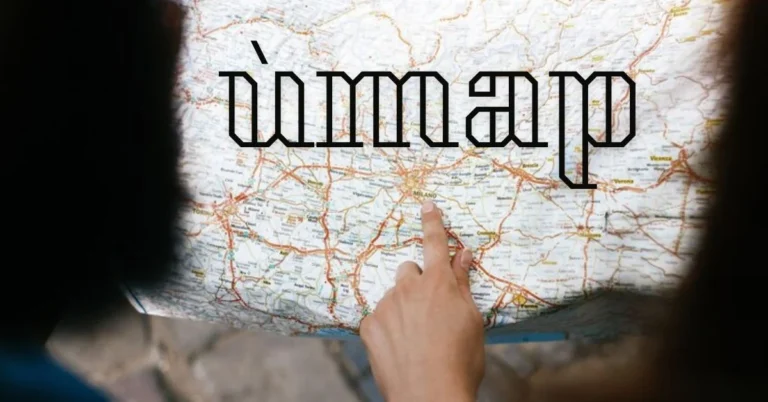Introduction to Interactive Mapping
Picture this: a world where maps aren’t just static images but dynamic tools that respond to your every query and need. Welcome to the realm of interactive mapping, where exploration meets innovation in a seamless digital landscape. In this blog post, we dive into the exciting world of Ùmap – the revolutionary platform shaping the future of mapping as we know it. Let’s embark on a journey filled with discovery, technology, and endless possibilities!
What is Ùmap and How Does it Work?
Imagine a tool that revolutionizes how we interact with maps – introducing Ùmap. It’s not just any mapping platform; it’s an interactive experience like no other. But what exactly is Ùmap?
Ùmap utilizes cutting-edge technology to allow users to create customized maps with layers of information, making them dynamic and engaging. You can add markers, shapes, and even embed multimedia content for a truly immersive mapping experience.
The process is simple yet powerful – choose your base map, add data layers or upload your own, customize the design to suit your needs, and voila! Your personalized map is ready for exploration. Whether it’s for business purposes or personal projects, Ùmap offers endless possibilities in visualizing spatial data.
Gone are the days of static maps; with Ùmap, you have the freedom to create interactive maps that tell stories and provide valuable insights at a glance.
Features and Benefits of Ùmap
Imagine a mapping tool that not only shows you where to go but also allows you to customize your experience according to your needs. That’s exactly what Ùmap offers with its array of features designed to enhance user interaction and convenience.
One key feature of Ùmap is its ability to integrate various data layers, providing users with comprehensive information at their fingertips. From traffic patterns to local points of interest, this platform ensures that users have access to all the relevant details they need for their journey.
Furthermore, Ùmap boasts a user-friendly interface that makes navigation a breeze. With intuitive controls and interactive elements, users can easily manipulate the map to suit their preferences, whether it’s zooming in for a closer look or switching between different views.
In addition, Ùmap offers real-time updates and synchronization across devices, ensuring that users always have access to the most current information no matter where they are. This seamless connectivity enhances the overall user experience and eliminates any potential discrepancies in data accuracy.
Real-Life Applications of Ùmap
Real-Life Applications of Ùmap:
Businesses are leveraging Ùmap to enhance their customer experience by providing interactive maps for store locations, product tracking, and delivery services. This technology allows users to easily navigate through different points of interest with detailed information at their fingertips.
Emergency response teams rely on Ùmap for quick and precise location data during crises or natural disasters. The real-time updates and customizable features enable them to coordinate rescue efforts efficiently and save lives.
Urban planners use Ùmap to visualize city infrastructure, plan transportation routes, and optimize public spaces. By analyzing spatial data on a dynamic map interface, they can make informed decisions that improve the quality of life for residents.
Researchers in various fields such as environmental science, archaeology, and sociology utilize Ùmap’s capabilities to map out research areas, collect data points, and visualize complex relationships between variables. This tool enables them to gain valuable insights that drive innovation and discovery.
Comparison to Traditional Map Systems
When we think about traditional map systems, paper maps often come to mind. These static representations served us well for years but lacked the flexibility and real-time updates that Ùmap provides. With traditional maps, you were limited to what was printed on the page – no zooming in or out, no dynamic data overlays.
In contrast, Ùmap offers a whole new level of interactivity. You can customize your view, toggle layers on and off, and even collaborate with others in real-time. Traditional maps were one-size-fits-all; they didn’t adapt to individual needs or preferences like Ùmap does.
Furthermore, traditional map systems required physical storage space and could easily become outdated. With Ùmap’s cloud-based platform, updates are instant and hassle-free. No more searching for the latest edition or carrying around bulky atlases.
The shift from traditional map systems to interactive mapping tools like Ùmap represents a significant evolution in how we navigate and interact with geographic information.
The Future of Interactive Mapping with Ùmap
As technology continues to advance at a rapid pace, the future of interactive mapping with Ùmap holds endless possibilities. With its user-friendly interface and customizable features, Ùmap is revolutionizing the way we navigate and interact with maps online.
In the coming years, we can expect to see even more innovative updates and integrations that will further enhance the user experience. From enhanced real-time collaboration tools to seamless integration with IoT devices, Ùmap is poised to become an indispensable tool for individuals and businesses alike.
Imagine being able to access hyper-accurate location data in real-time or overlaying multiple layers of information seamlessly on a single map. The potential applications are limitless – from urban planning and disaster response to personalized travel recommendations based on individual preferences.
With Ùmap leading the way in interactive mapping technology, the future holds exciting possibilities for how we visualize and interact with geographical data. Stay tuned as we continue to push boundaries and redefine what is possible in the world of digital mapping.
Conclusion
In a world where technology continues to evolve at a rapid pace, interactive mapping has emerged as a powerful tool for businesses, organizations, and individuals alike. Ùmap stands out as a cutting-edge solution that offers advanced features and benefits for users looking to create dynamic and engaging maps.
With its intuitive interface and customizable options, Ùmap simplifies the process of creating interactive maps while providing an array of tools to enhance user experience. From real-time data updates to seamless integration with other platforms, Ùmap is poised to revolutionize the way we interact with geographic information.
As we look towards the future of interactive mapping, it’s clear that Ùmap will play a significant role in shaping this landscape. Its potential applications are limitless, from urban planning and environmental monitoring to tourism and education. With its innovative approach and user-friendly design, Ùmap is set to lead the way in the next generation of mapping technologies.
So whether you’re a business owner looking to visualize customer locations or an educator seeking creative ways to engage students with geography, consider incorporating Ùmap into your toolkit. The possibilities are endless, and the future of interactive mapping has never looked more promising than with Ùmap by your side.
FAQs
1. What is interactive mapping and how does it differ from traditional maps?
Interactive mapping involves dynamic, digital maps that allow users to interact with the data, such as zooming, panning, and clicking on map elements for more information. Unlike traditional static maps, interactive maps provide real-time updates and customizable layers, enhancing user engagement and providing a richer experience.
2. What features does Ùmap offer to enhance user interaction?
Ùmap offers a range of features including customizable data layers, real-time updates, and the ability to add multimedia content like images and videos. Users can create personalized maps, integrate various data sets, and share their maps for collaborative purposes, making it a versatile tool for both personal and professional use.
3. How can businesses benefit from using Ùmap?
Businesses can leverage Ùmap to improve customer experiences by creating interactive maps for store locations, product tracking, and delivery services. Ùmap’s real-time data and detailed information layers help businesses optimize logistics, enhance customer engagement, and make informed decisions based on spatial data analysis.
4. Can Ùmap be used for educational purposes?
Absolutely! Ùmap is an excellent tool for educators to create engaging and interactive lessons. It allows students to explore geographic data, understand spatial relationships, and visualize historical events or scientific data. The platform’s multimedia integration also helps in making learning more interactive and immersive.
5. What are some real-life applications of Ùmap in emergency response?
Emergency response teams use Ùmaps for efficient coordination during crises. The platform provides real-time location data, which is crucial for dispatching resources and managing rescue operations. Customizable features allow teams to map out affected areas, track the movement of resources, and communicate effectively with all parties involved.

